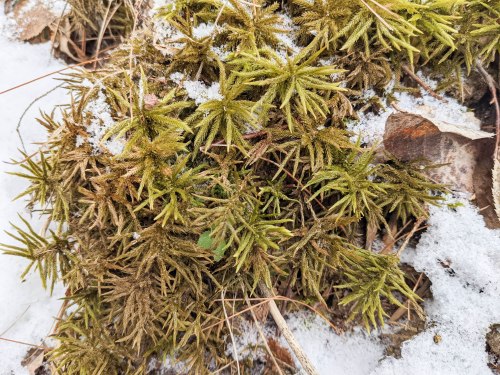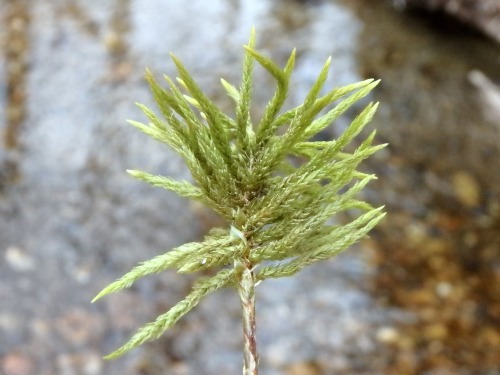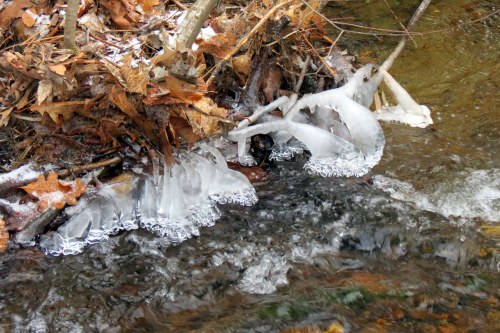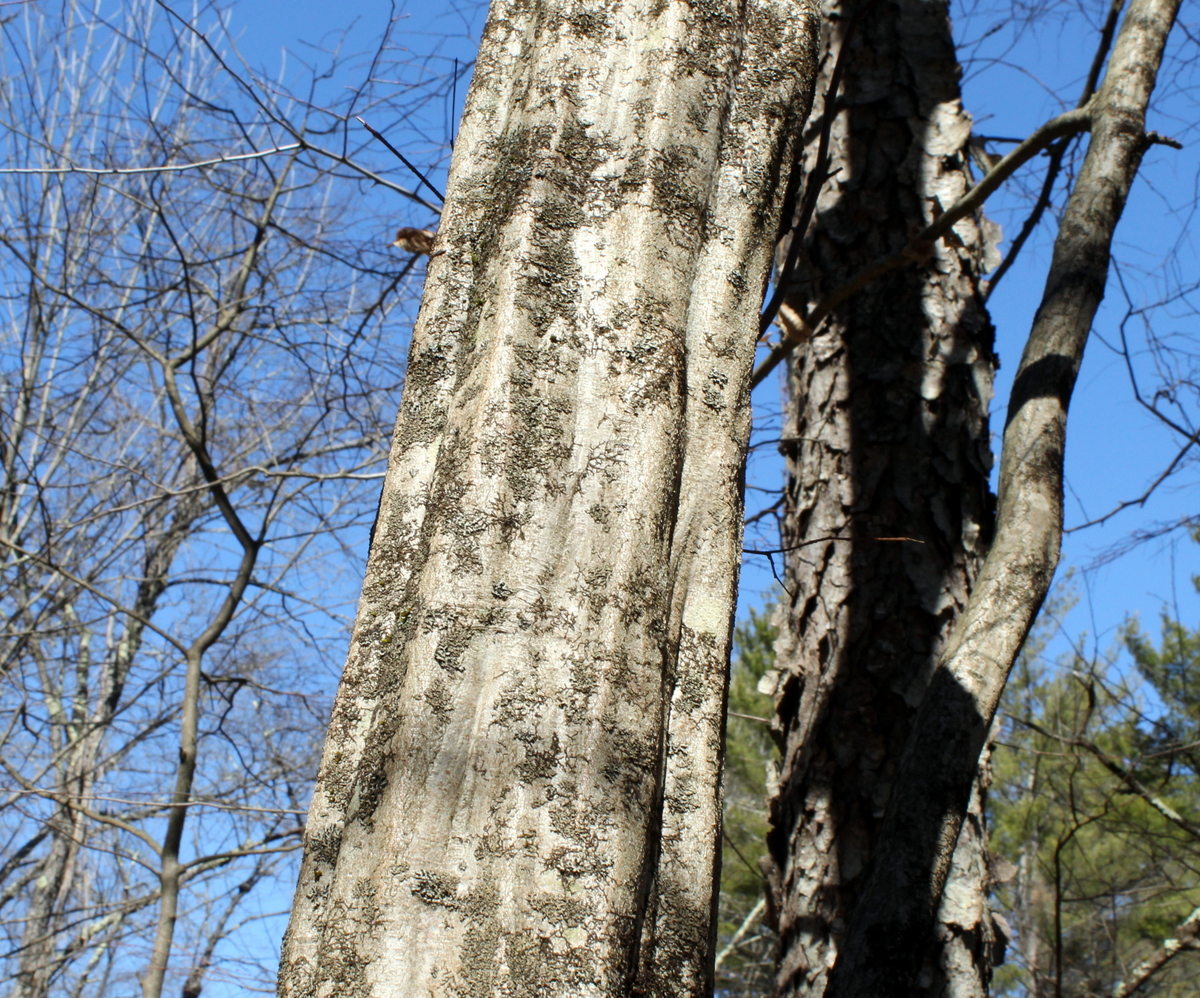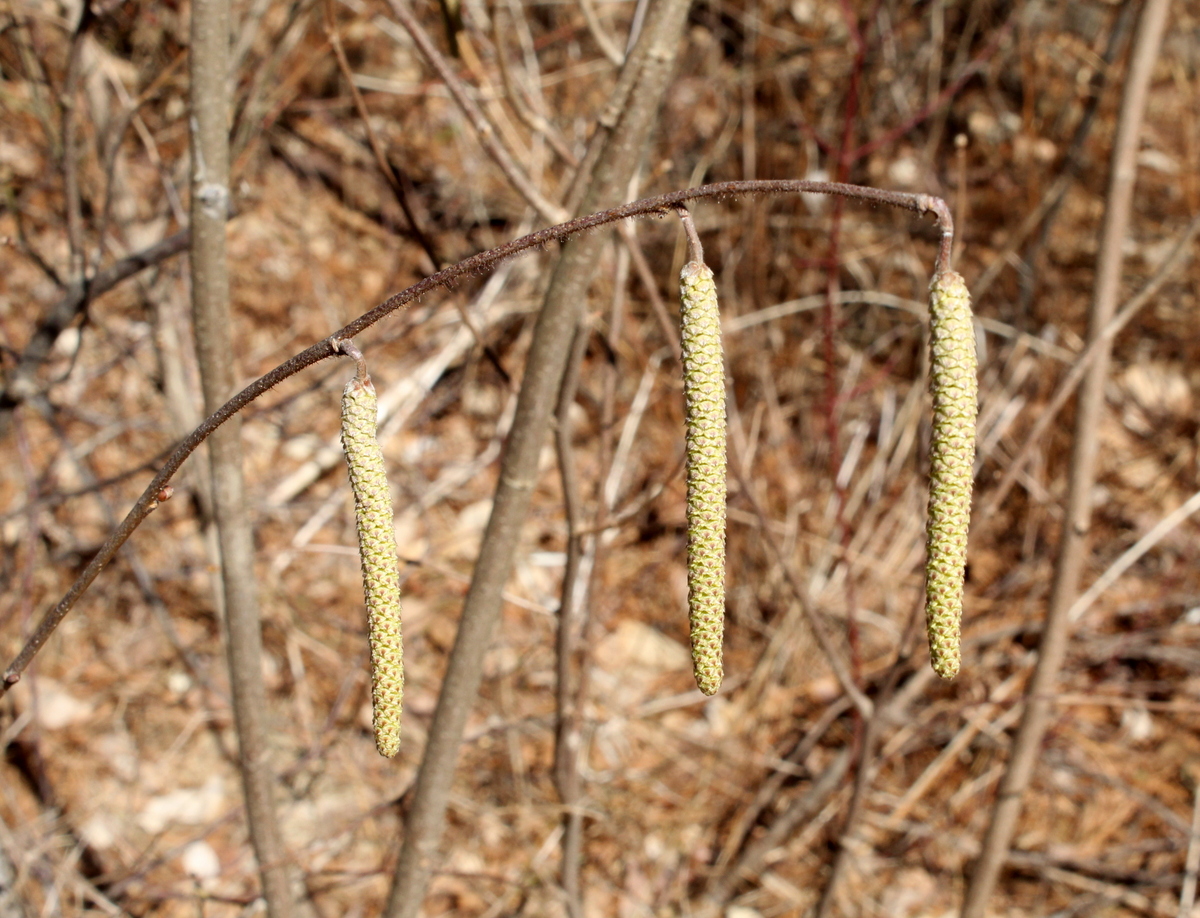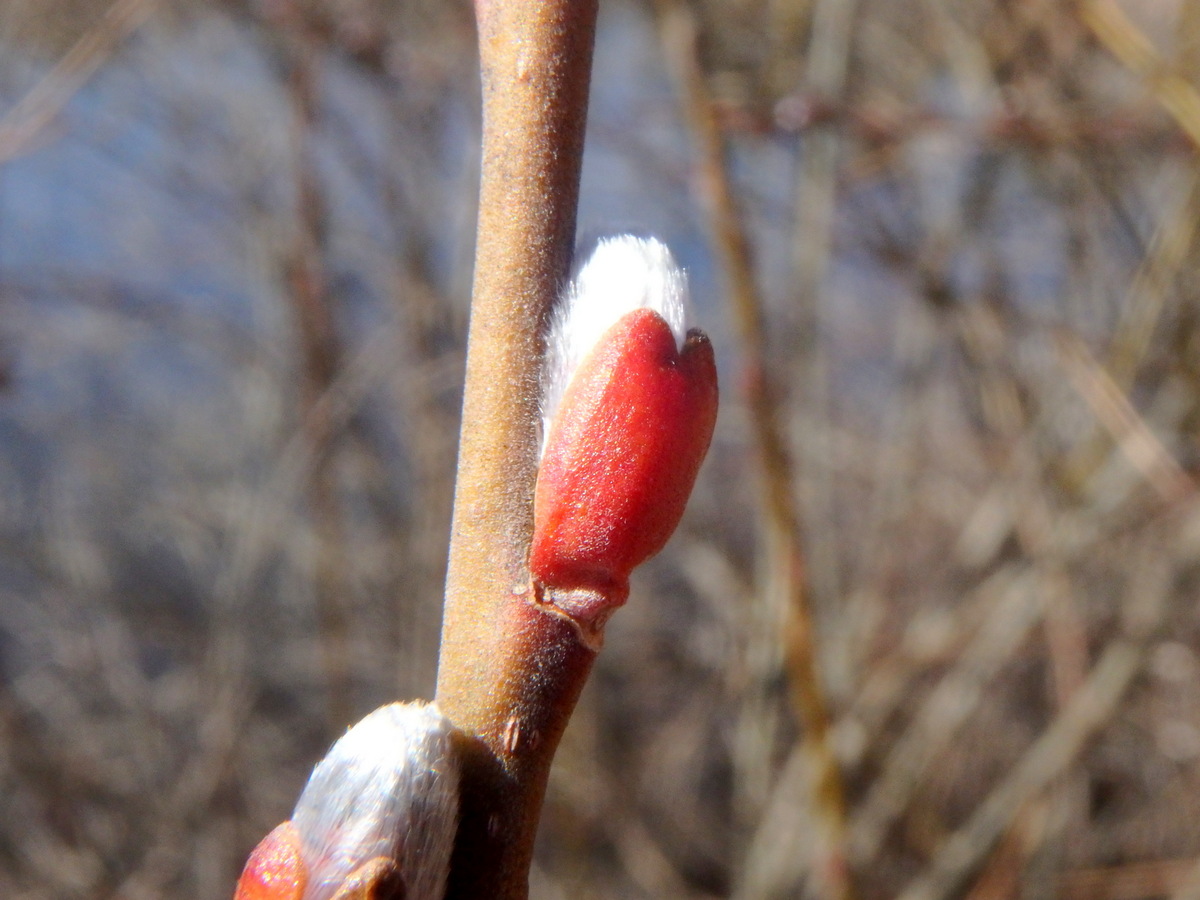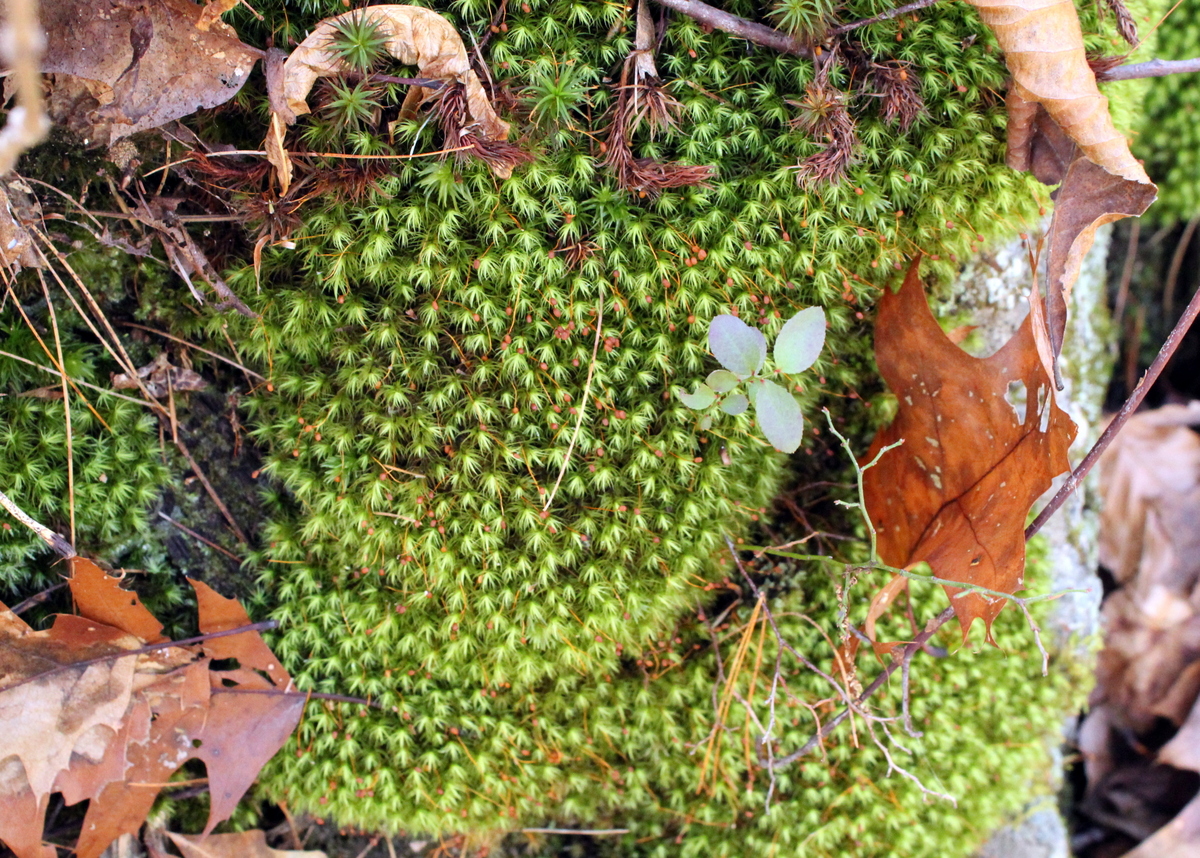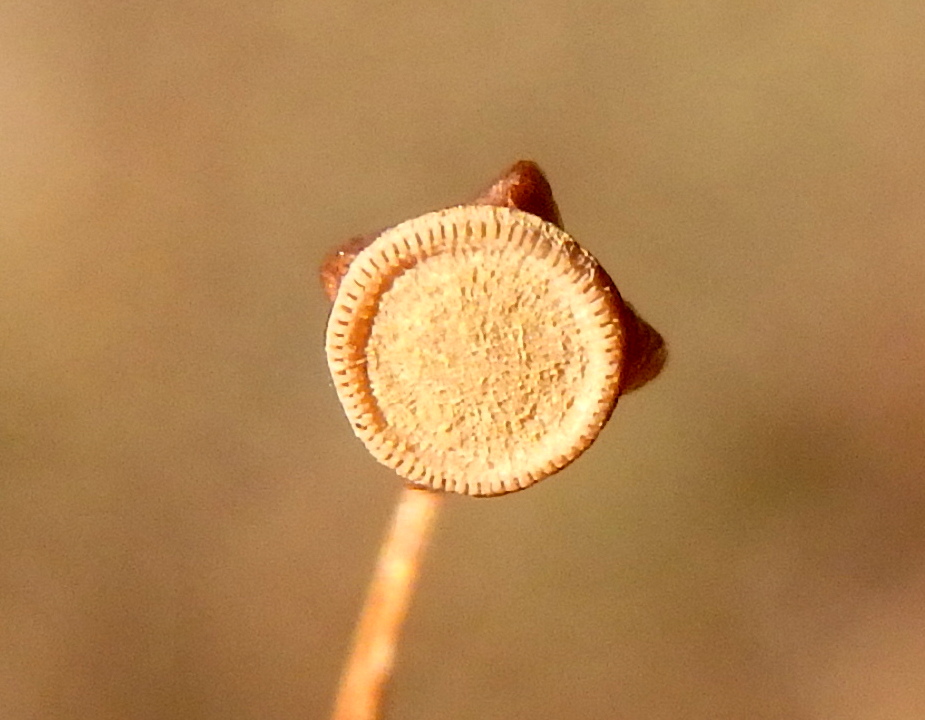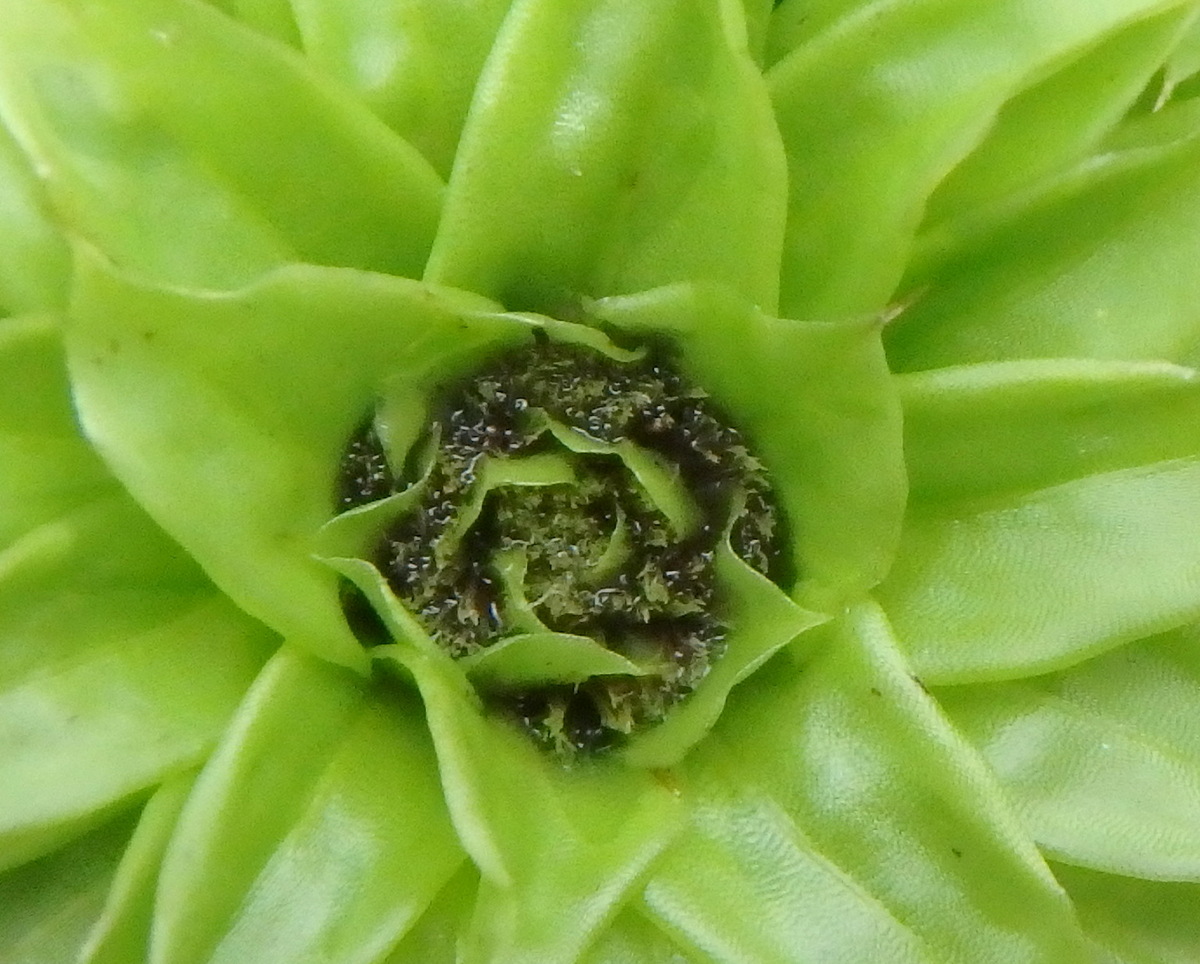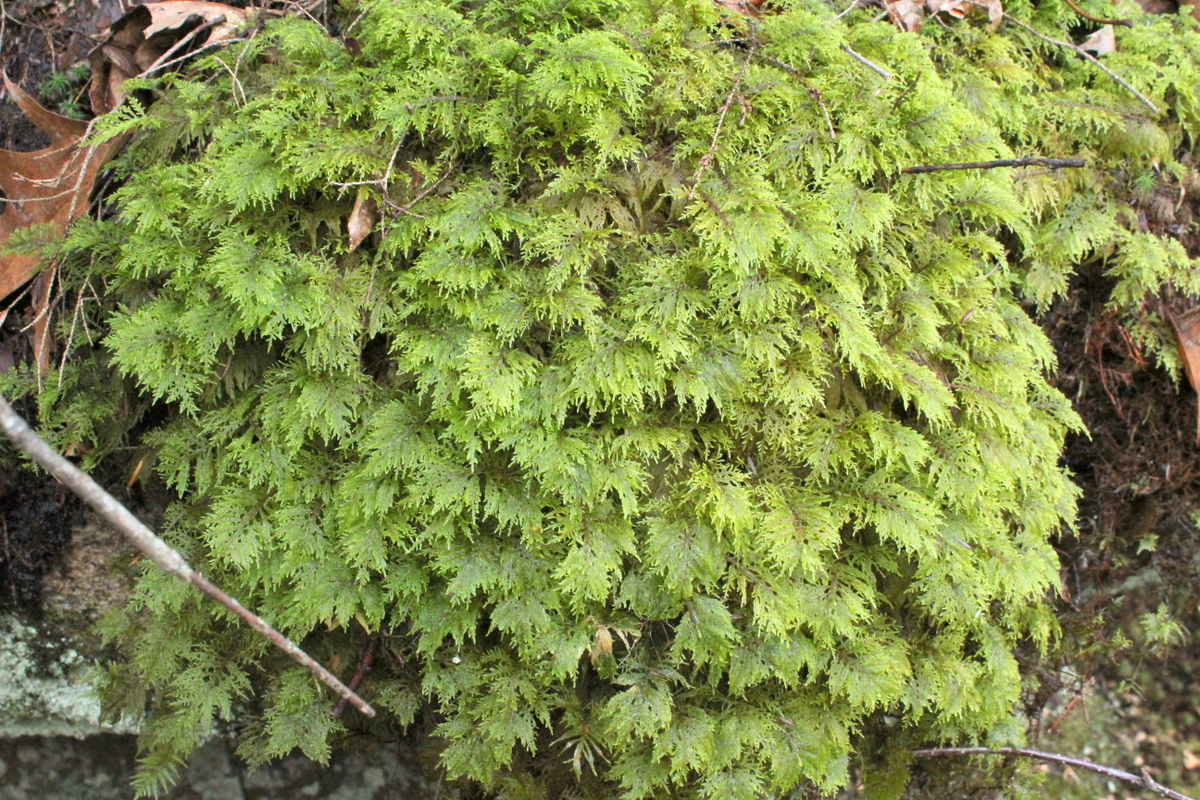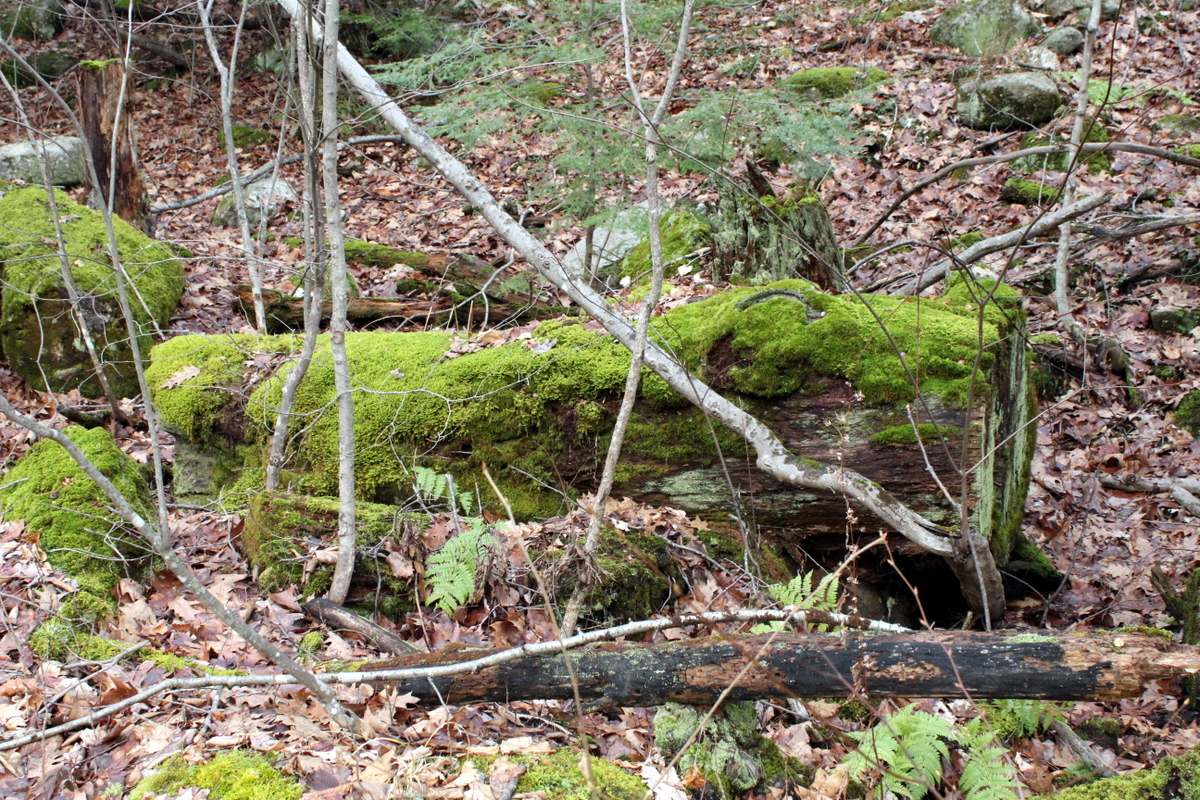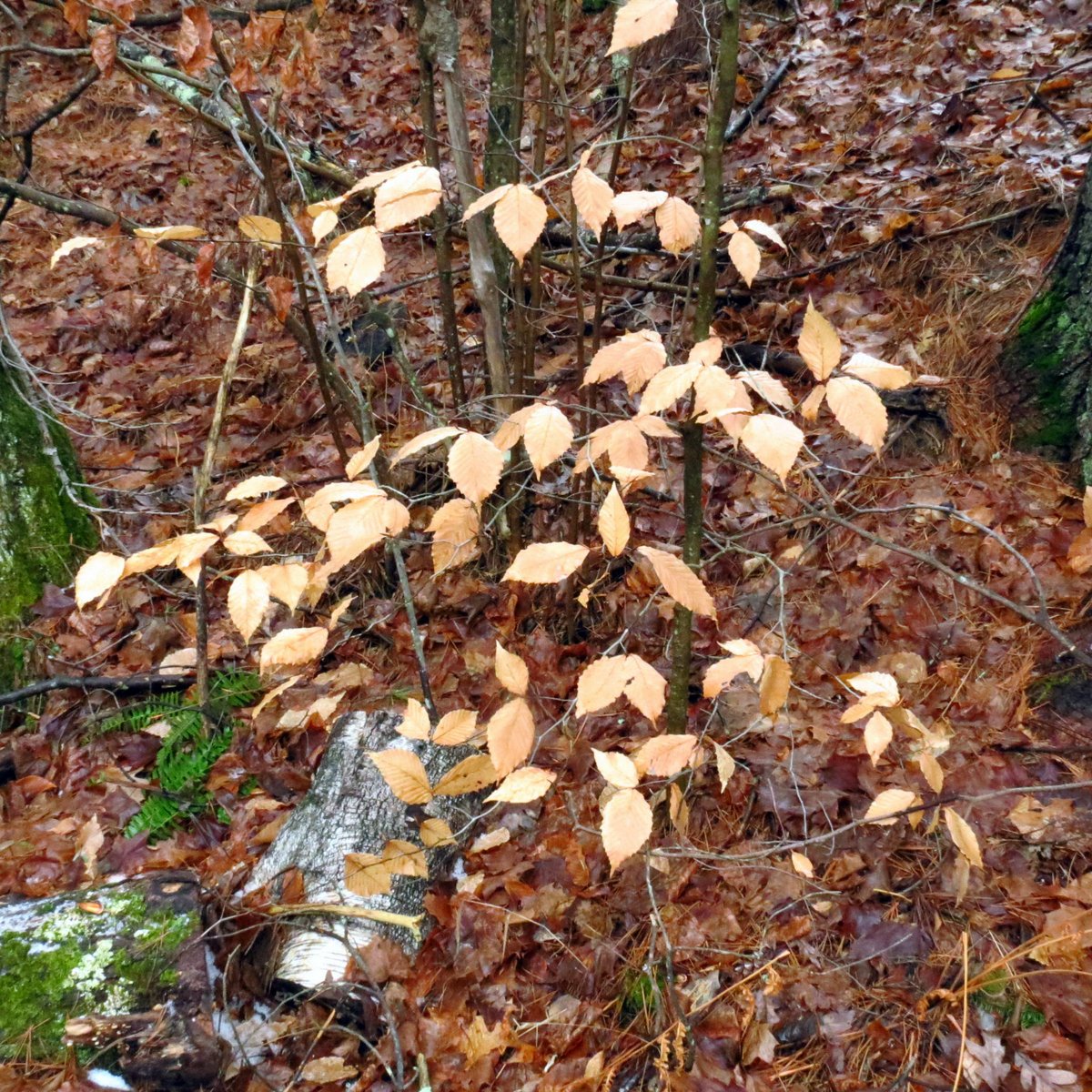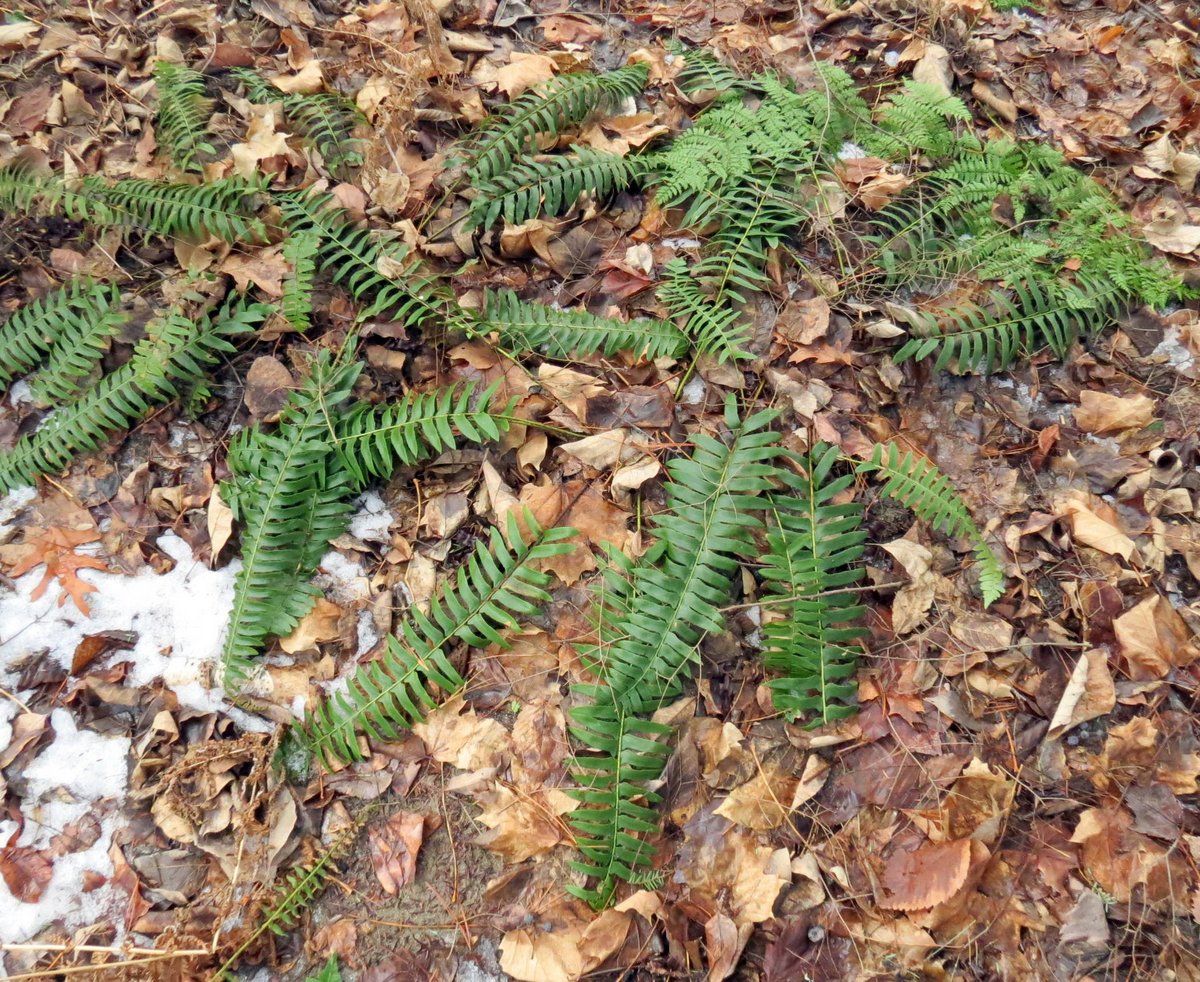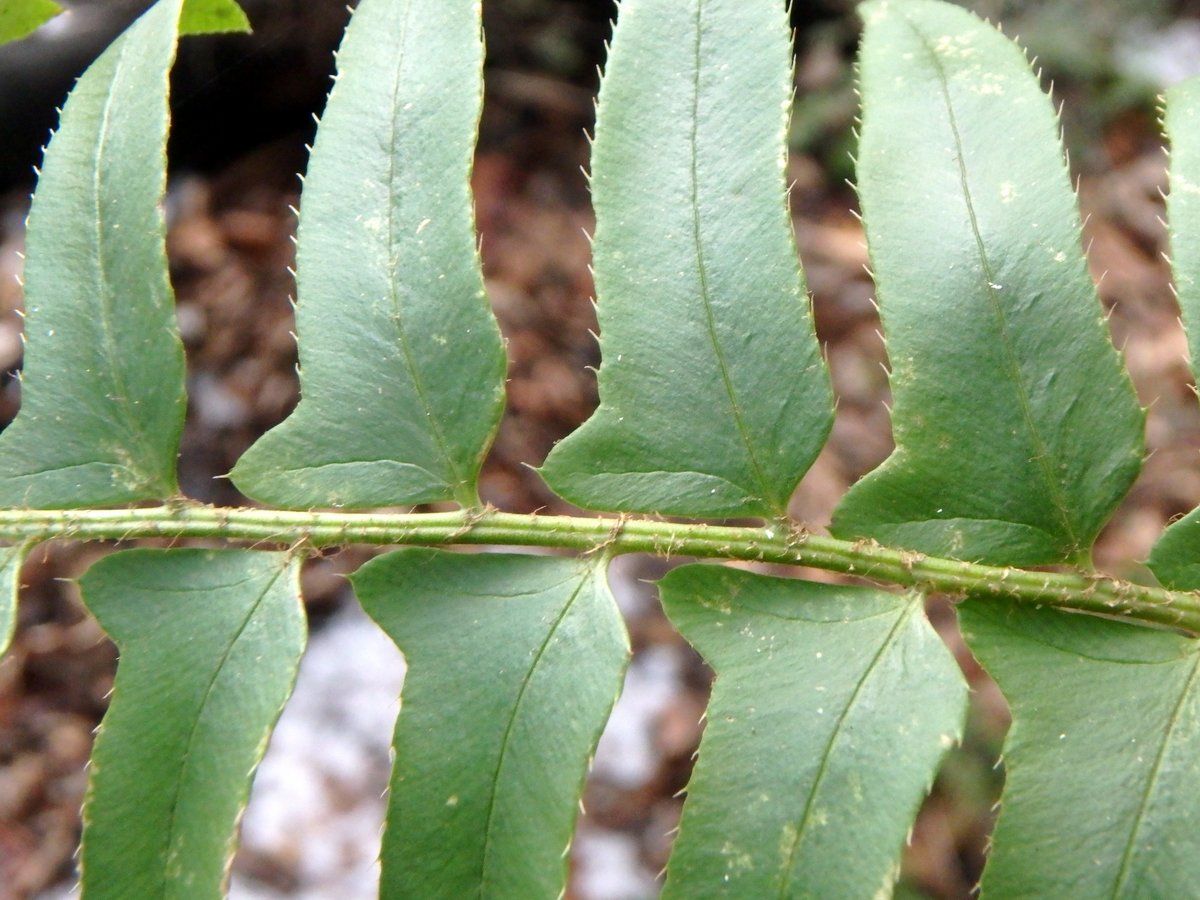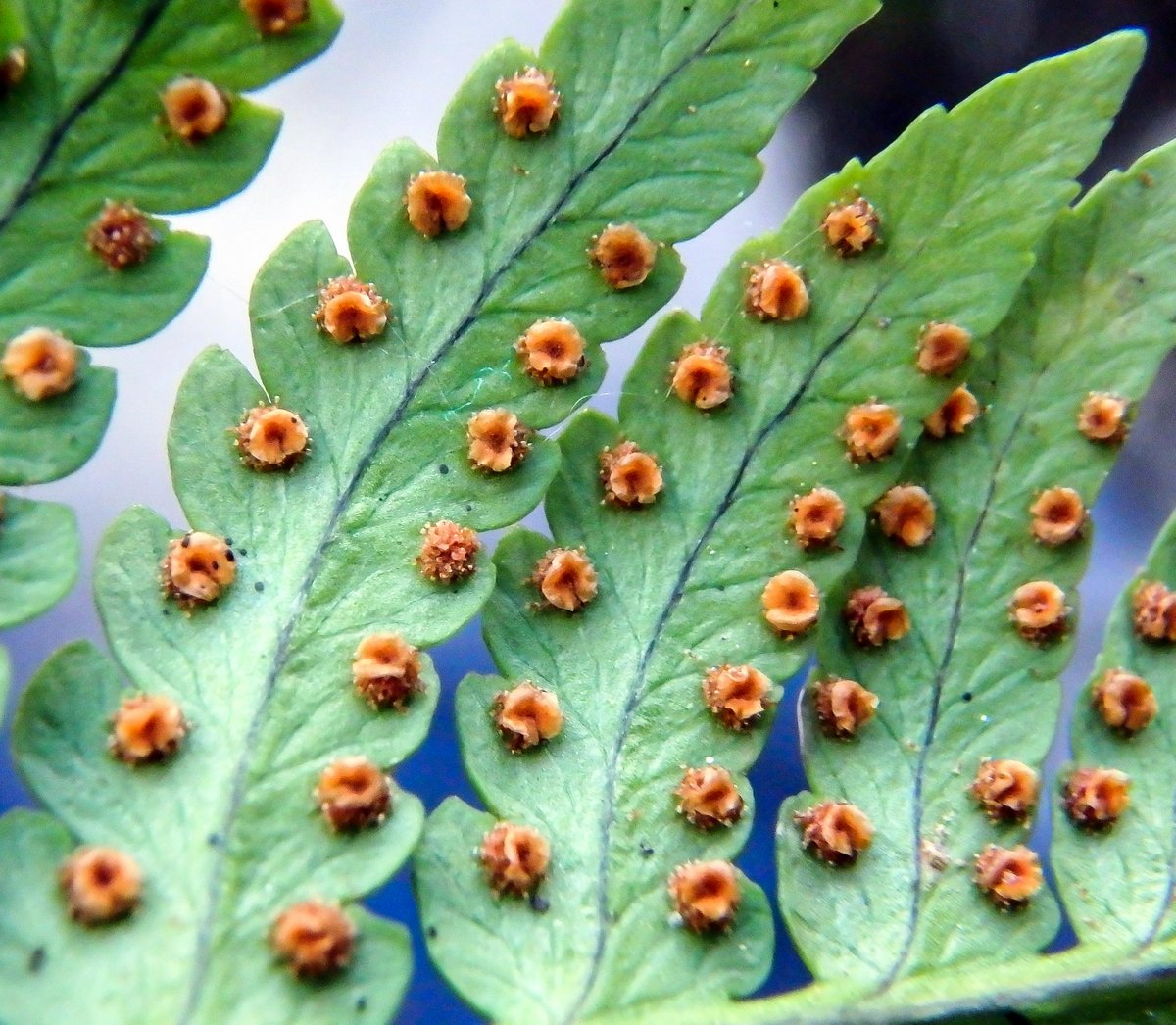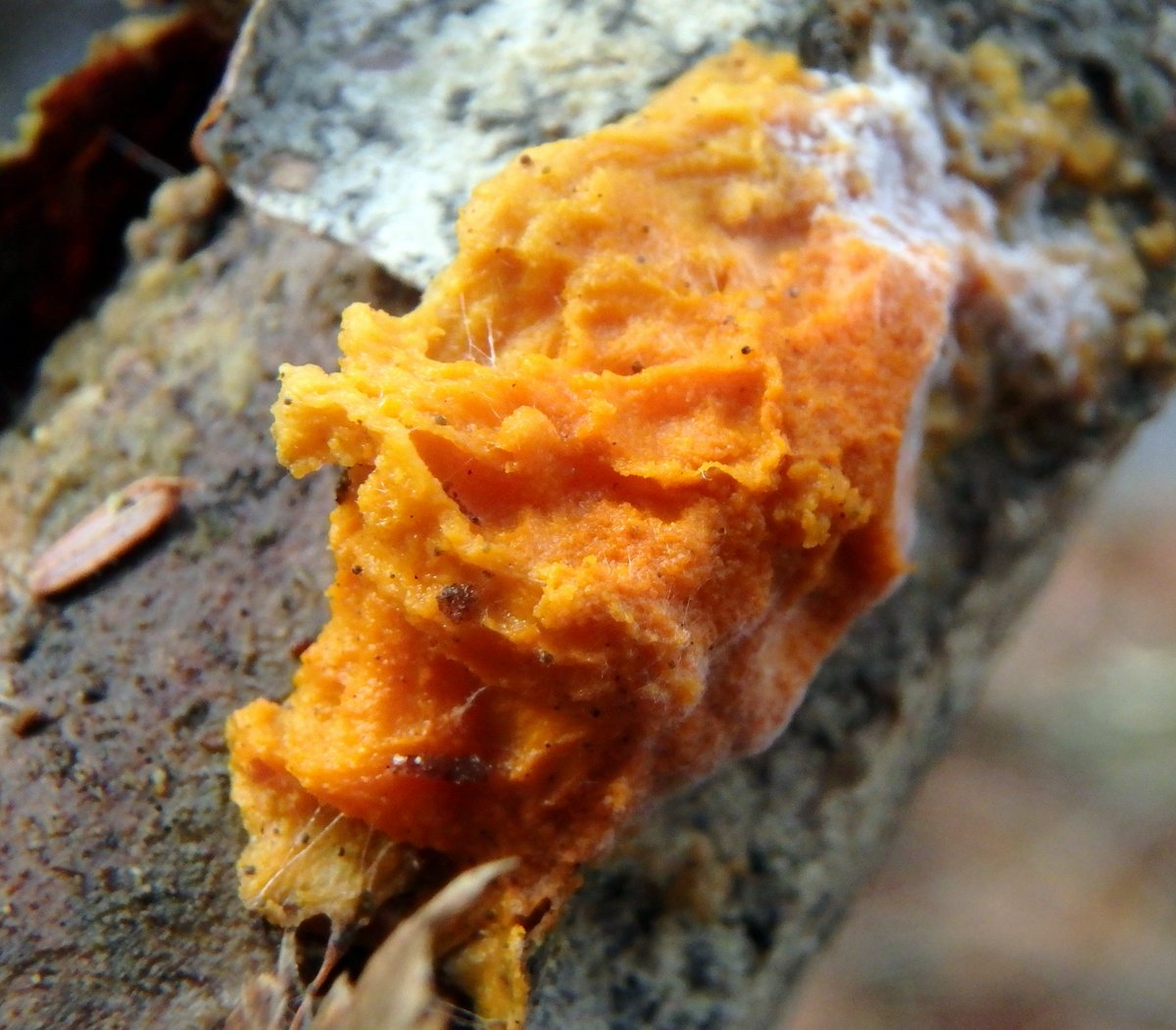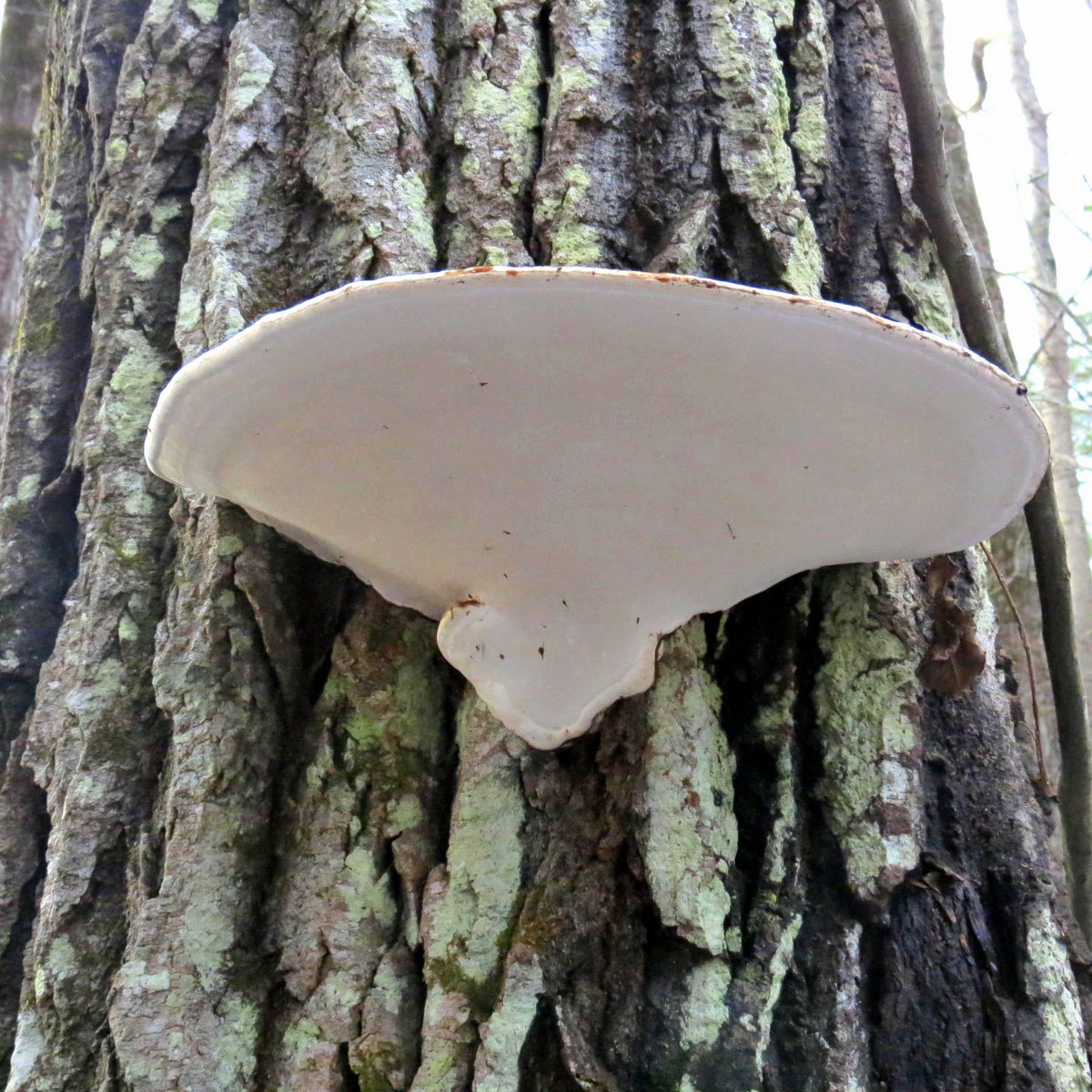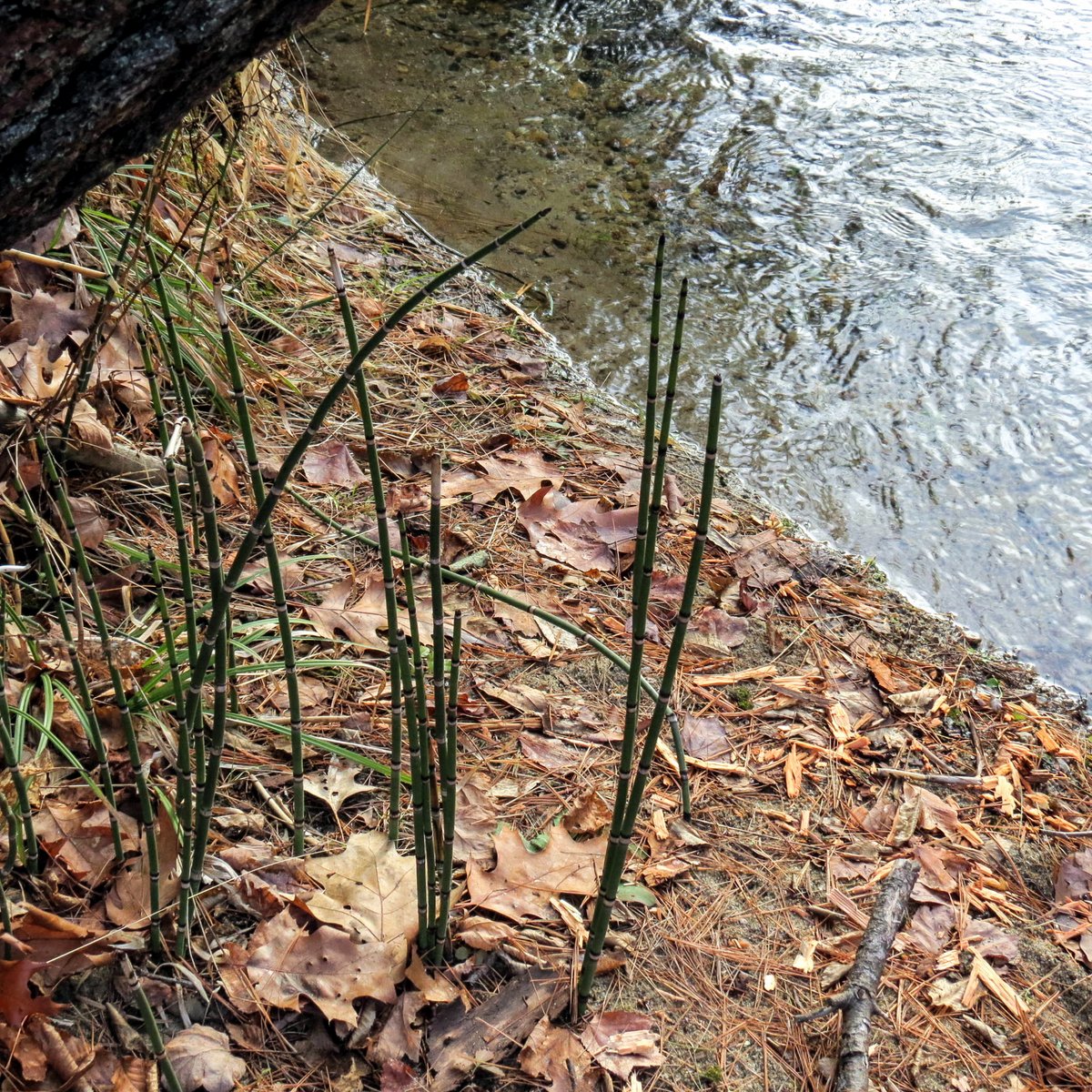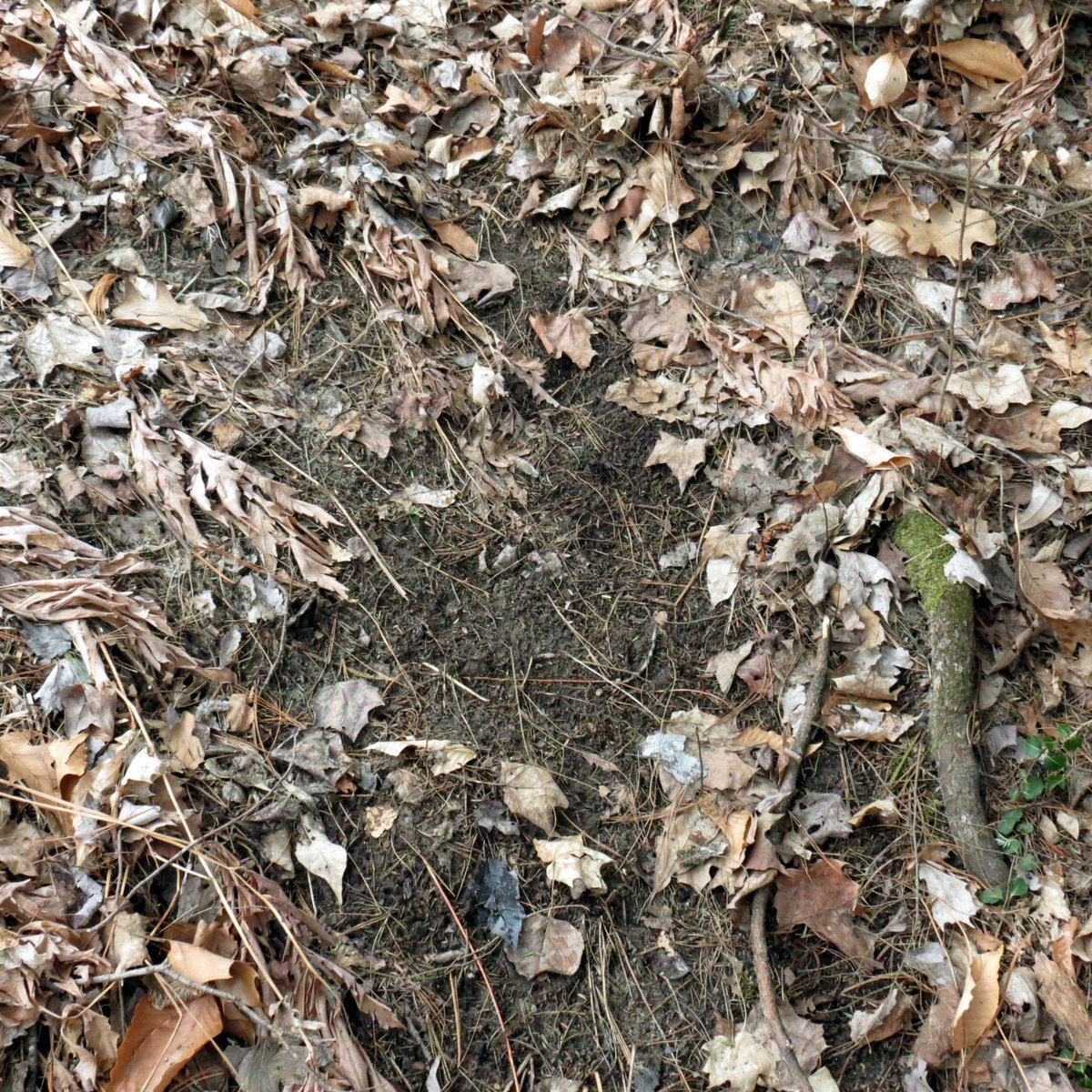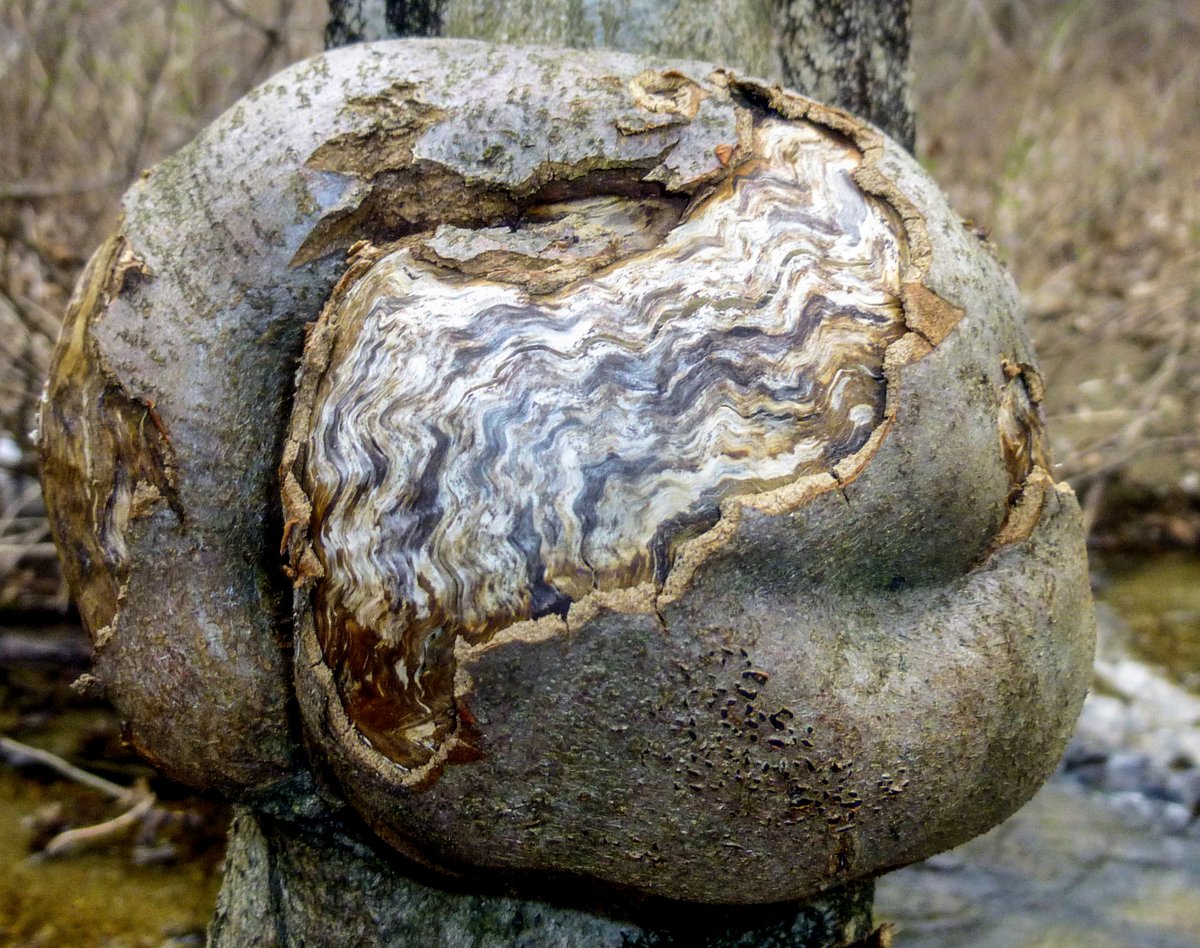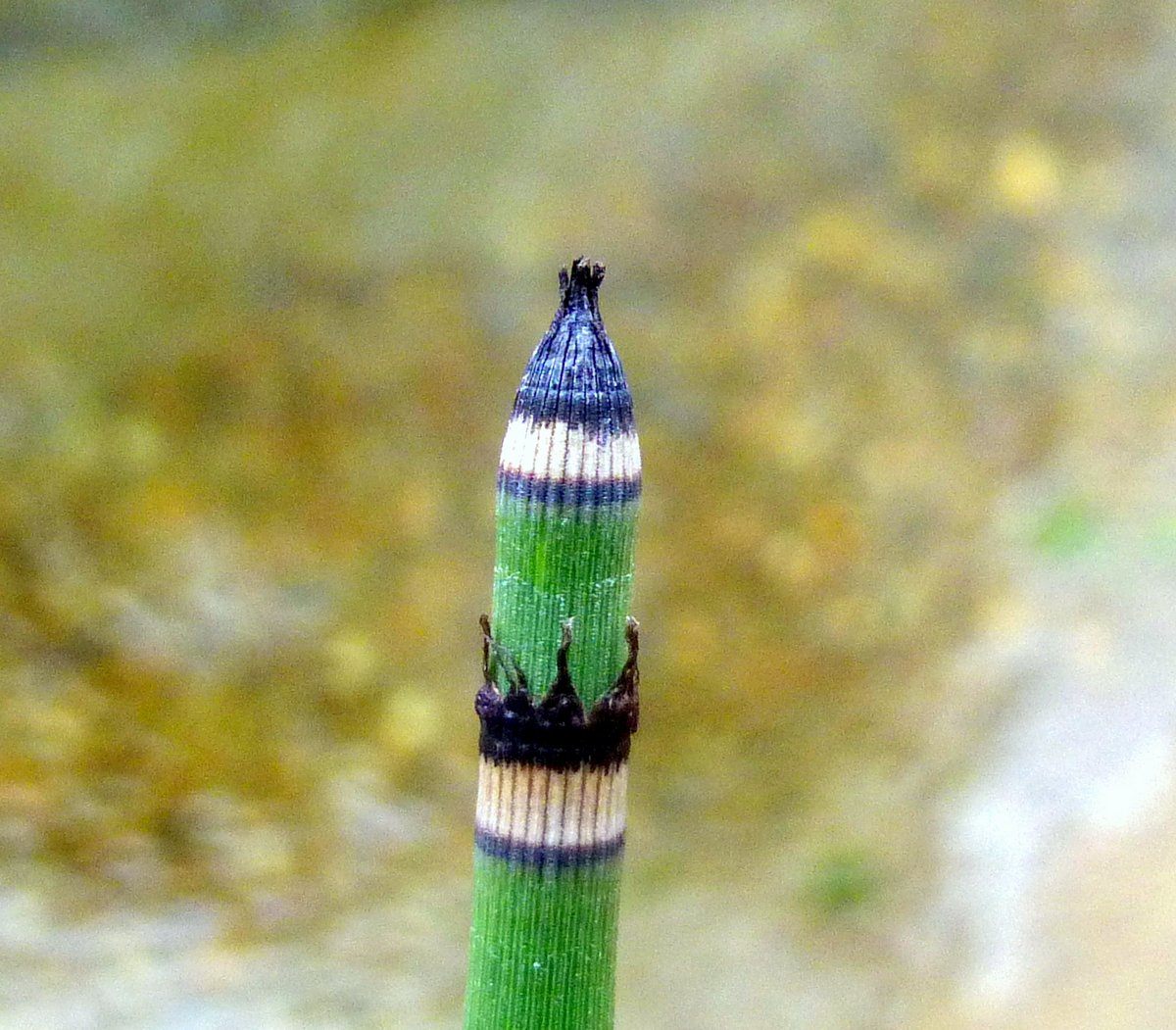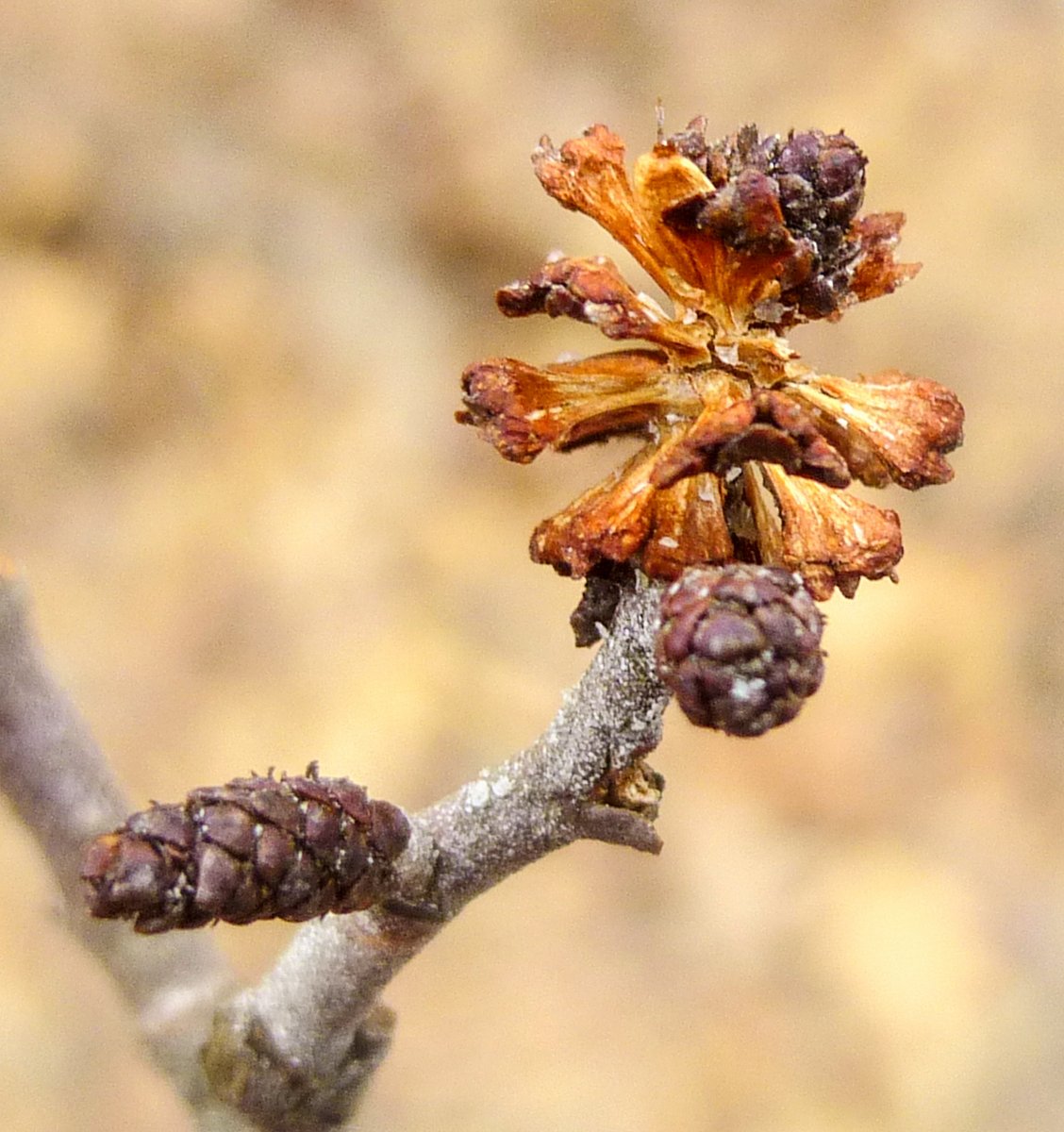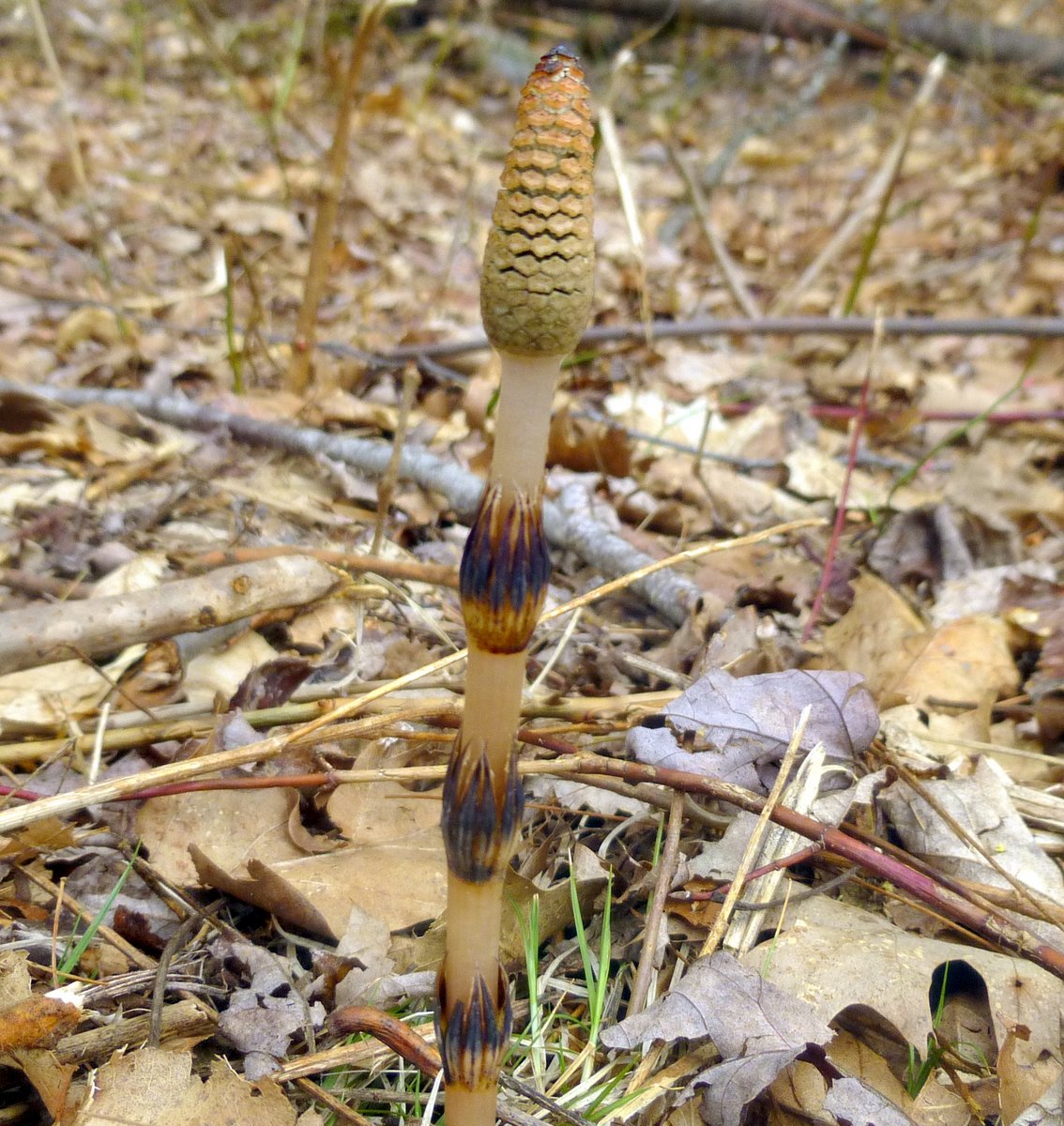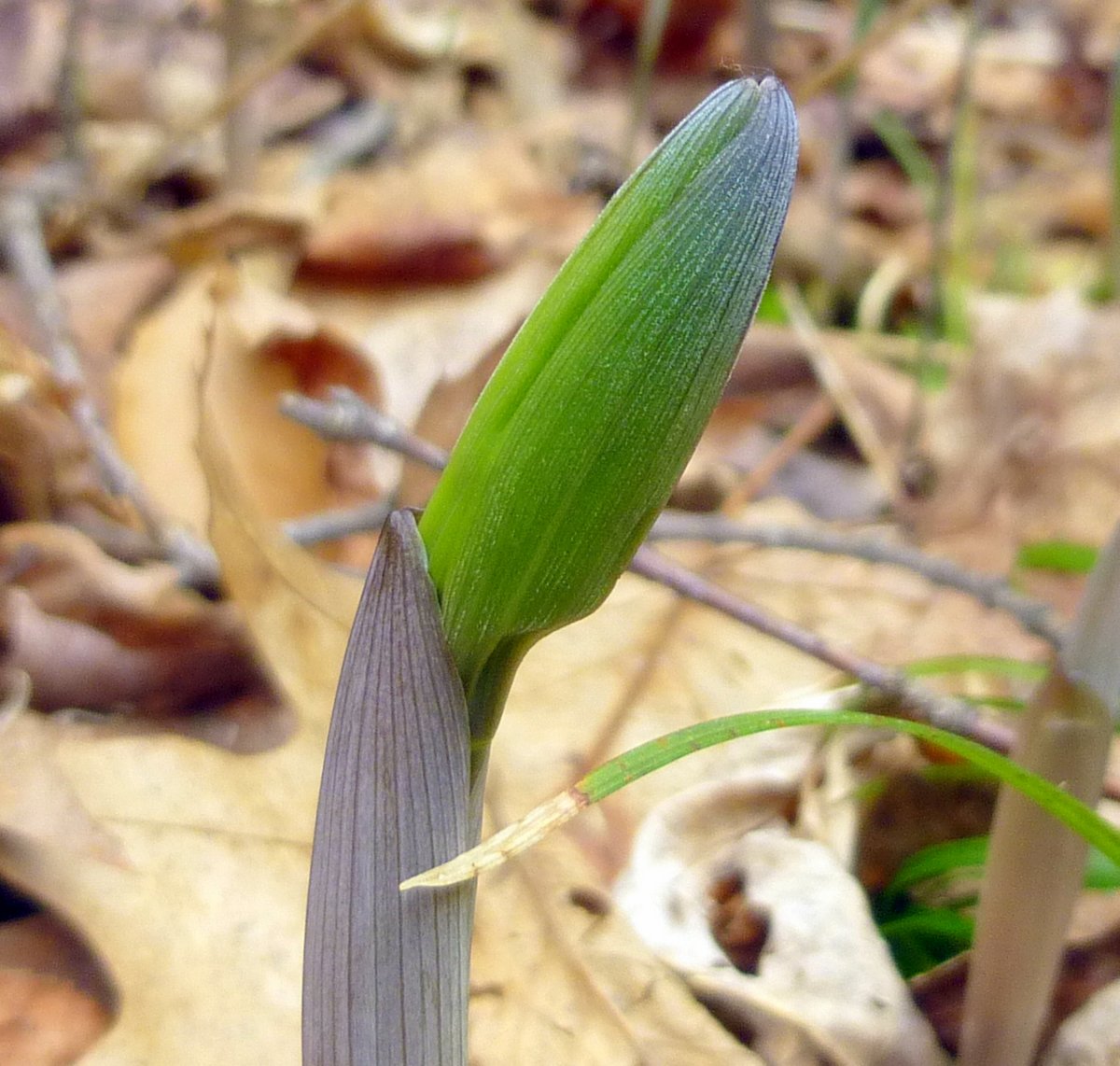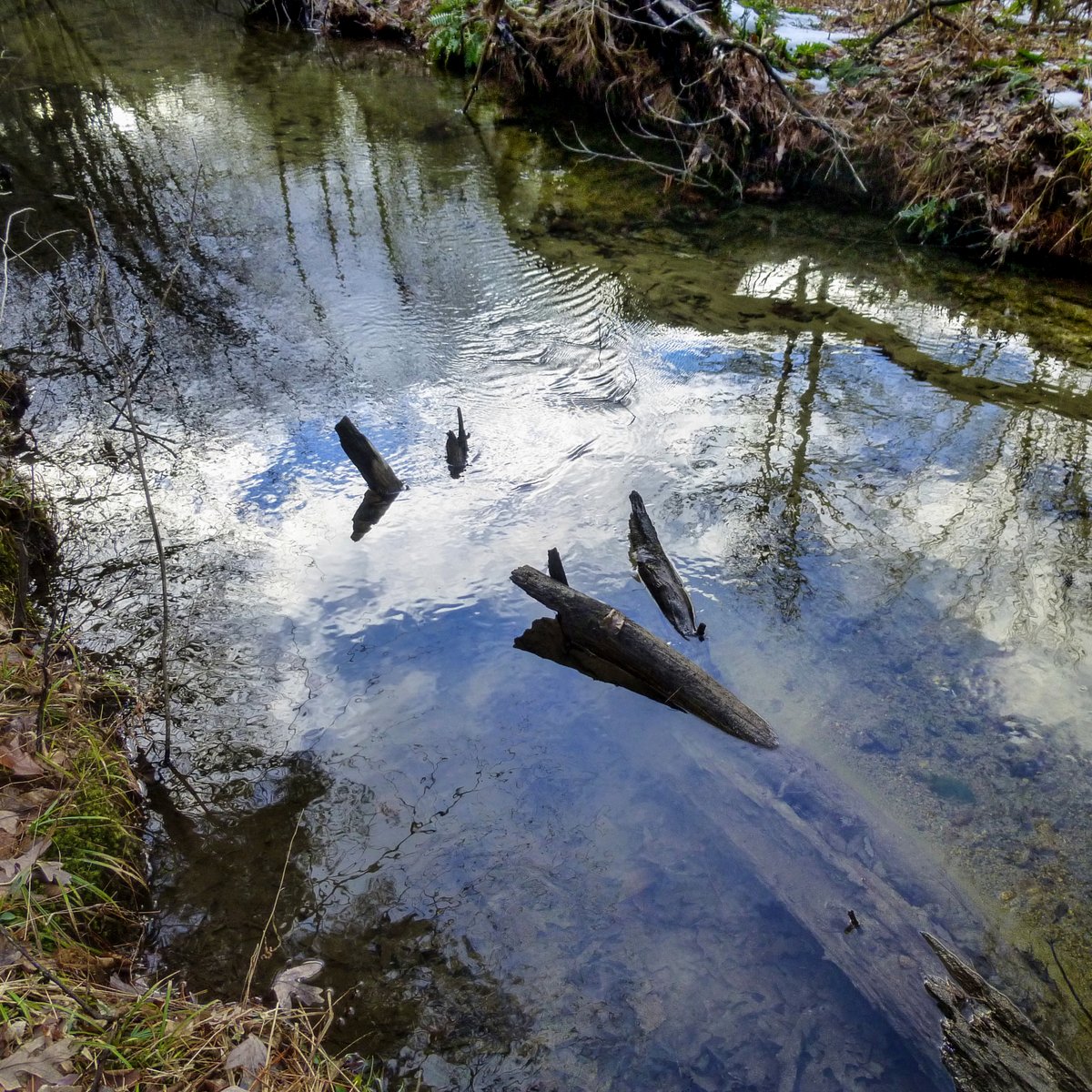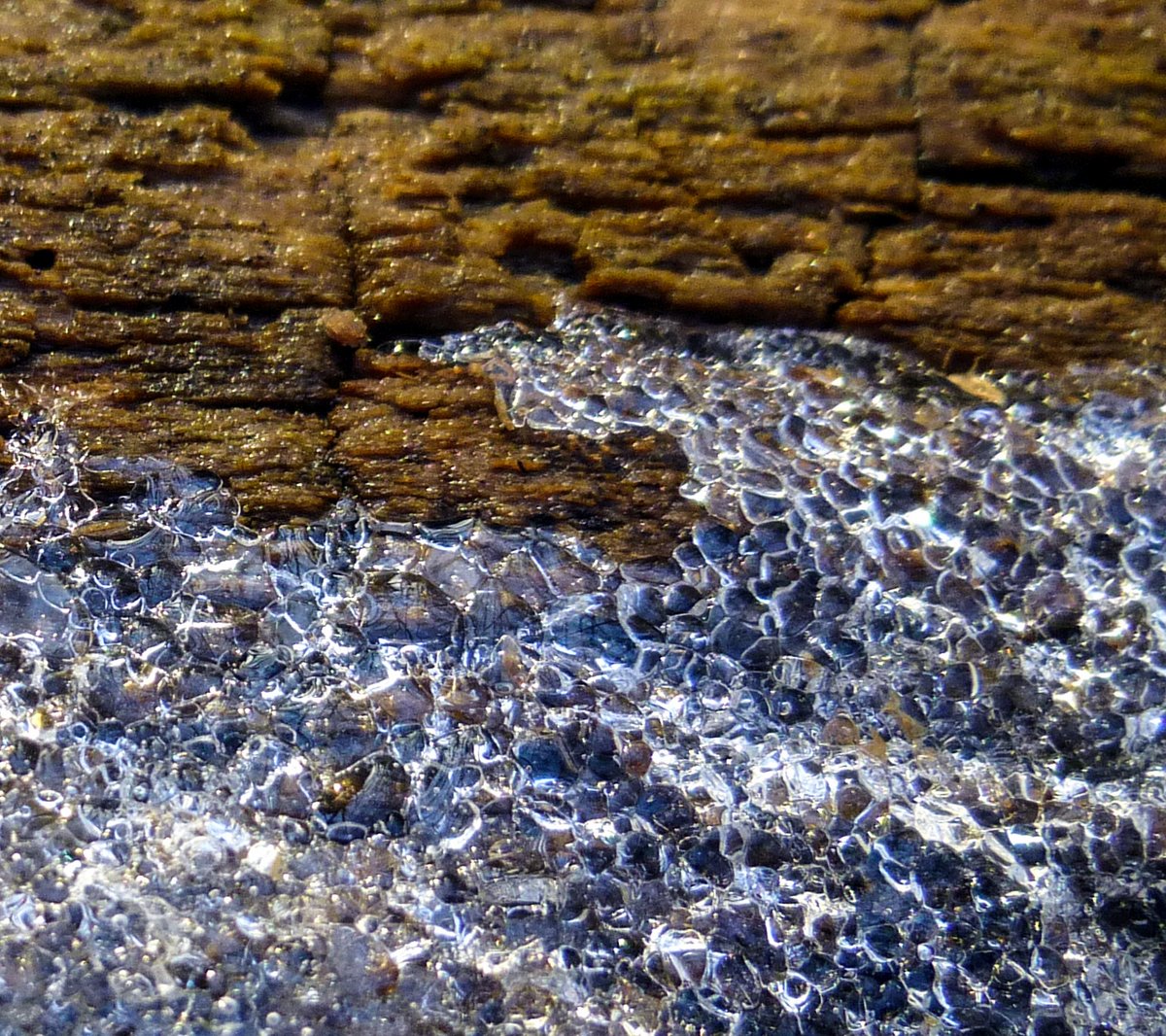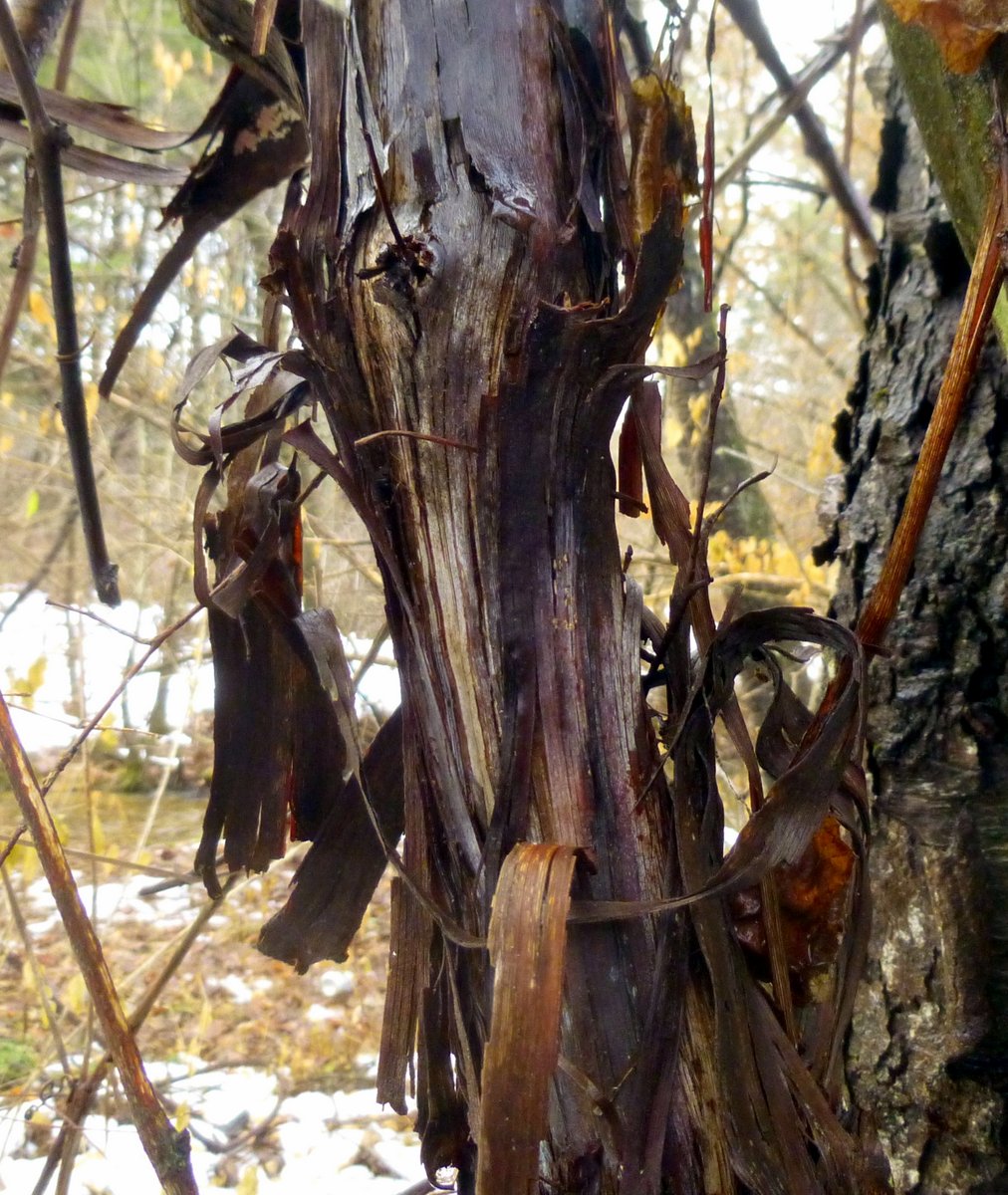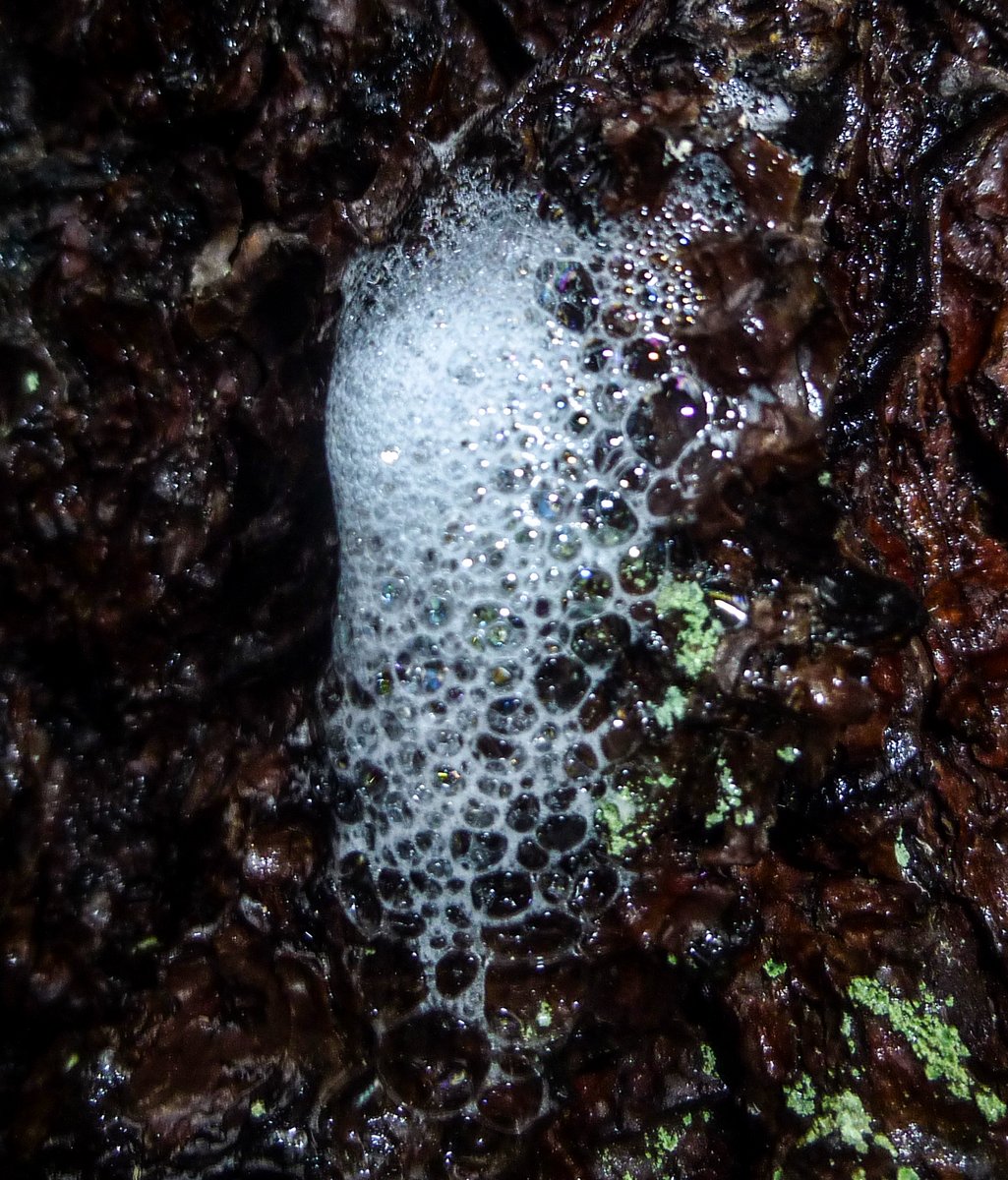
We’re having another one of those strange, almost snowless winters so far this season but even though it hasn’t been snowy it has been cold enough for ice to form, so in early December I decided to visit a stream near my neighborhood. Last year I found beautiful lacy ice all along it but this time as you can see, there was no ice.

There was frost on the lawns, so I thought for sure there would be ice on the stream.

A little neighborhood pond had a thin film of ice on it.

But there was little to no ice to be found here at the stream. No matter; there are always interesting things to see, like this pronounced meander in the stream. When I first started coming here it was nothing like this but over the years flooding has dumped a lot of sand and gravel in a pile over there on the left, forcing the stream to move more and more to the right. As it moves it washes soil away from tree roots and many trees have fallen.

I stopped to admire some beech leaves. The beech is a tree that gives beauty to the forest all year long.

I also saw some colorful turkey tail fungi on a stump. Part of their scientific name is versicolor, and it’s a good one. I’ve seen these come in pink, orange, blue, purple, and everything in between. They’re one of the most colorful fungi I know of and winter is a good time to find them. As far as I know no one has ever discovered what causes their many variations in color.

I looked back to where I had come from and saw how the stream meander is slowly cutting into the hillside and washing it away; a mountain slowly turning to sand. I thought the low sun falling on the green plants was a beautiful scene. It showed how, around every corner, there is the very real possibility of finding staggering beauty of the kind we’ve never seen. We need to learn to stop and let the beauty of life seep into us until it fills every part of our being; until the word Hallelujah comes to us naturally, without a thought.

One of the things I come here to see are the tree mosses. When I first started coming here there was a group of maybe ten plants right at the water line but now, they have grown away from the stream and there are hundreds of them. They must like wet ground because this place floods regularly and they often spend part of their life underwater. They’re beautiful little things and I’d like to see them in more places but so far this is the only place I’ve ever found them.

This unknown creature grew on a tree and though I was sure I had seen it before I couldn’t remember its name. It looks almost like a crustose lichen with an area of something else growing through it but I can’t imagine what that something else would be. In the end I decided it didn’t matter. Memories are like dogs that come when you call them but otherwise lie silent and still. Sometimes they don’t come at all, and seem so far off I can’t tell if they are even there anymore. The effort it takes to recall them doesn’t seem worth whatever limited value they may have. They are like things stored in the attic; not worth climbing the stairs to see, but seemingly still too precious to throw away. They sit gathering dust but one day they will have to go, so why bother adding to the pile by gathering up more of them? Let each day start fresh and shining brightly, unobscured by the film of dust that is yesterday.

This is a two-part post; what you’ve seen so far happened one day and what you will see from here on happened on another. Luckily the sun was shining brightly on both days. I would have loved to have been able to see it the way this NASA photo shows it.

On the second day I went to the stream, about three weeks later, there was ice. Strangely though, at nearly 40 degrees F. this day was warmer than the first.

Last winter when I came here, I found beautiful, lacy ice covering the surface of the stream but this year I saw mostly splash ice. Splash ice forms when running water splashes droplets up on cold surfaces, where they freeze almost immediately. It can be beautiful; all of what we see here is splash ice.

Ice curtains along the banks showed how the water level had dropped, with ribbons of ice forming at each different level.

This view is looking down on ice similar to that in the previous photos.

This ice sculpture grew on a twig that hung out over the stream.

This very thin, clear pane of ice had water droplets hanging from its underside.

This ice reminded me of the bullseye glass windowpanes you can still see in very old houses. Before modern glass making came along glass windowpanes were blown from a gob of molten glass that was spun at the end of the blowpipe until it formed a large disc. Rectangular windowpanes were cut from the disc with the outer, thinner, clearer panes sold to the wealthy and the inner, thick, wavy panes with the pontil mark bullseye in the center sold to the poor. You couldn’t see anything out of them but they did let in light and that was what was important. I can’t even guess how this ice would have formed to look just like them.
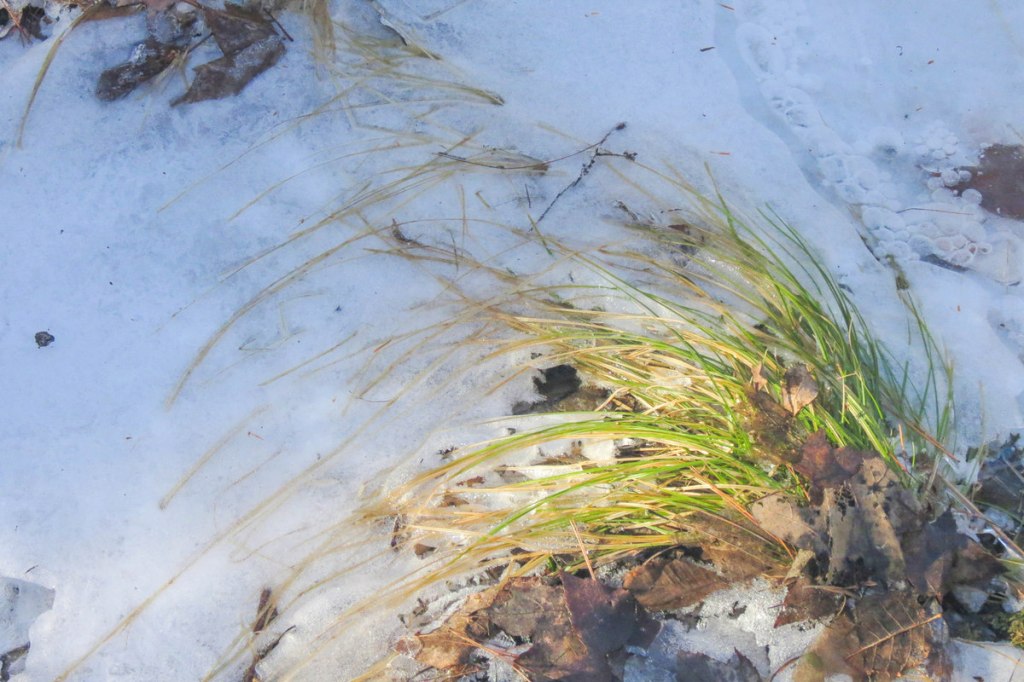
Neither can I explain why this bit of dead grass had a ray of sunlight falling on it.
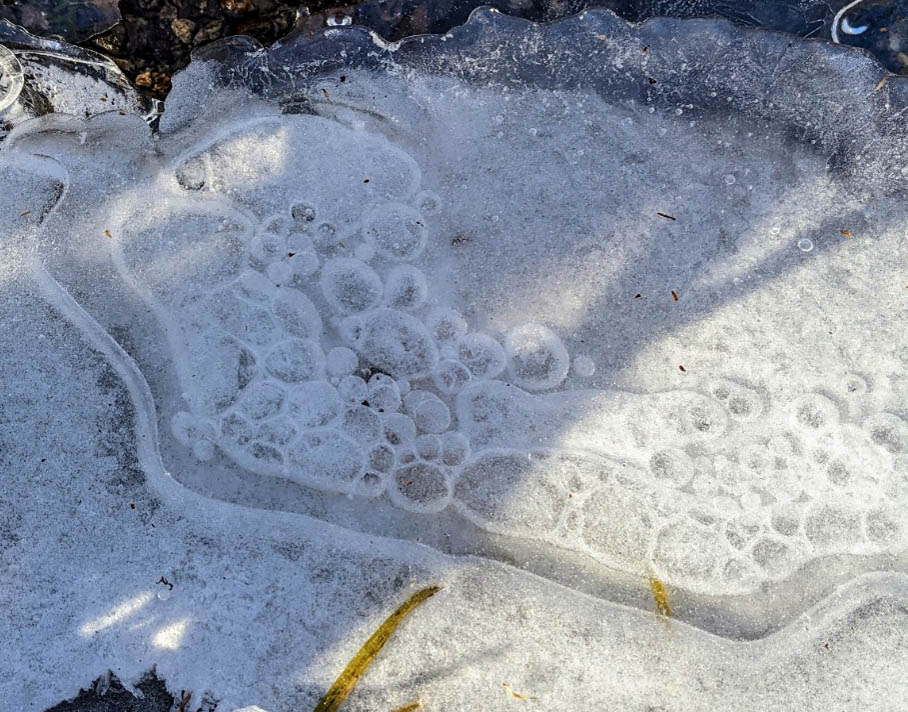
I’ve heard that very white ice is white because it has a lot of oxygen in it, so maybe all the bubbles in this piece go along with that theory. It must have gotten very cold very quickly to freeze bubbles in place.

The only thing you can expect from ice is the unexpected, because no two pieces will ever be alike. Ice helps teach us that we should go into nature with no expectations and just enjoy what we see.

On the way home this scene looked more like March than December. Now into January without plowable snow in my yard, it looks to be another unusual winter. I hope you enjoyed coming along through the snowless woods. In a normal winter we wouldn’t have been able to go without snowshoes.
The wise man knows that it is better to sit on the banks of a remote mountain stream than to be emperor of the whole world. ~ Zhuangzi (c. 369 BC – c. 286 BC)
Thanks for coming by.










